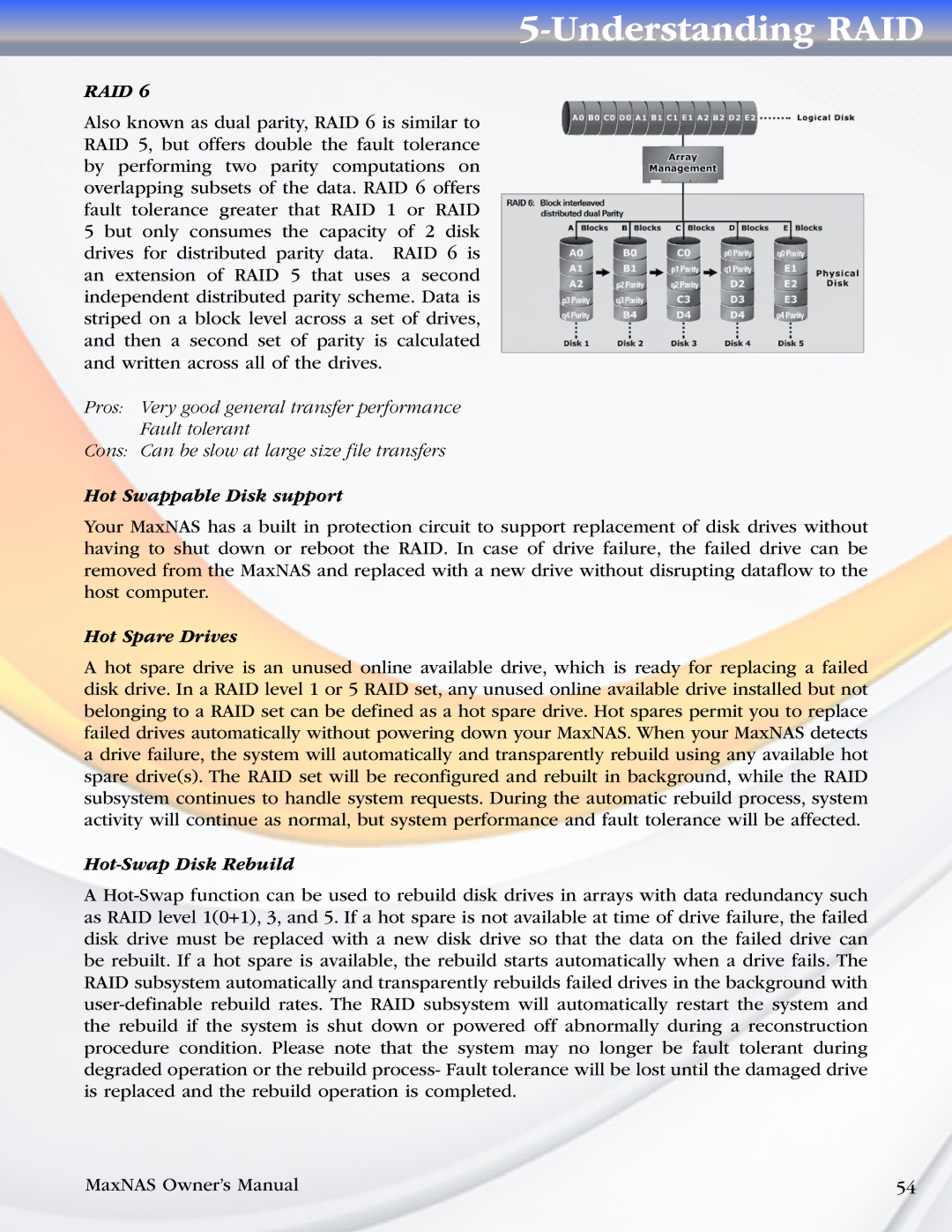
5-Understanding RAID
RAID 6
Also known as dual parity, RAID 6 is similar to RAID 5, but offers double the fault tolerance by performing two parity computations on overlapping subsets of the data. RAID 6 offers fault tolerance greater that RAID 1 or RAID 5 but only consumes the capacity of 2 disk drives for distributed parity data. RAID 6 is an extension of RAID 5 that uses a second independent distributed parity scheme. Data is striped on a block level across a set of drives, and then a second set of parity is calculated and written across all of the drives.
Pros: Very good general transfer performance
Fault tolerant
Cons: Can be slow at large size file transfers
Hot Swappable Disk support
Your MaxNAS has a built in protection circuit to support replacement of disk drives without having to shut down or reboot the RAID. In case of drive failure, the failed drive can be removed from the MaxNAS and replaced with a new drive without disrupting dataflow to the host computer.
Hot Spare Drives
A hot spare drive is an unused online available drive, which is ready for replacing a failed disk drive. In a RAID level 1 or 5 RAID set, any unused online available drive installed but not belonging to a RAID set can be defined as a hot spare drive. Hot spares permit you to replace failed drives automatically without powering down your MaxNAS. When your MaxNAS detects a drive failure, the system will automatically and transparently rebuild using any available hot spare drive(s). The RAID set will be reconfigured and rebuilt in background, while the RAID subsystem continues to handle system requests. During the automatic rebuild process, system activity will continue as normal, but system performance and fault tolerance will be affected.
Hot-Swap Disk Rebuild
A
MaxNAS Owner’s Manual | 54 |
